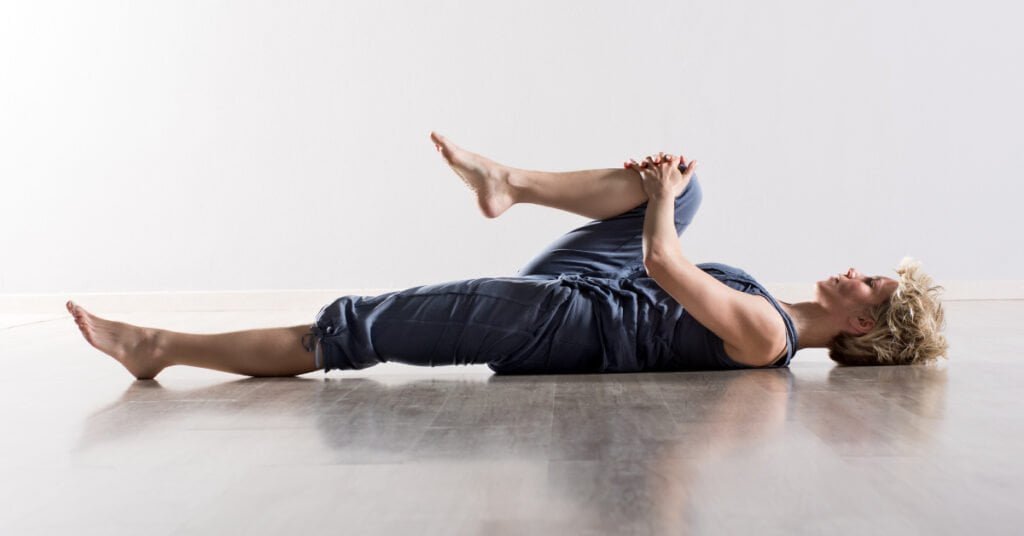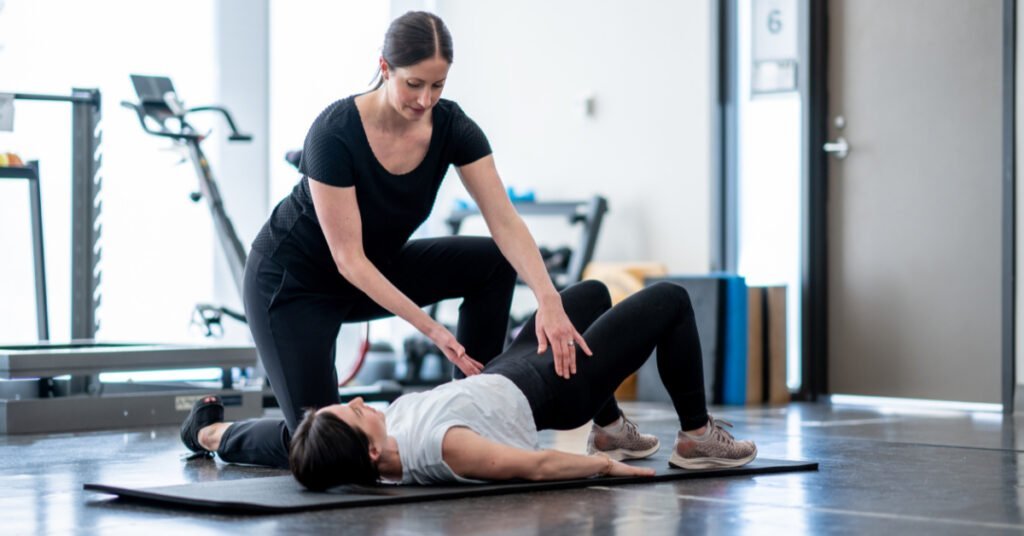Last Updated on 10 February 2024
UPDATED 09 FEBRUARY 2024
The pelvic floor, although often overlooked, plays a crucial role in our overall health and well-being. It is a group of muscles located in the pelvic area that support pelvic organs like the bladder, uterus, and rectum. These muscles play a vital role in maintaining urinary and bowel control, sexual function, and childbirth. However, factors such as pregnancy, childbirth, aging, and certain medical conditions can weaken the pelvic floor muscles, leading to pelvic floor dysfunction.
Understanding the importance of and knowing how to strengthen your pelvic floor muscles is essential for both men and women. In this article, we will explore the pelvic floor muscles, their significance for women, signs of pelvic floor muscle dysfunction, exercises to strengthen the pelvic floor, and when to seek professional consultation. So, let’s dive in and learn how to strengthen your pelvic floor to get fast results.
- Five pelvic floor exercises that strengthen your pelvic floor
- Factors to consider before choosing a pelvic floor exercise regimen
- Monitoring your progress and ensuring correct practice
- When do you need to seek health professional help?
- Can pelvic floor exercises give fast results?
- Frequently asked questions
Five pelvic floor exercises that strengthen your pelvic floor
Several exercises can be incorporated into a pelvic floor muscle training routine. These exercises target the pelvic floor muscles, helping improve their strength and control. Some effective exercises include quick flick Kegels, heel slides, marches, the happy baby pose, and diaphragmatic breathing. Incorporating these exercises into your routine can yield fast results in strengthening your pelvic floor muscles and improving pelvic floor function.
Kegels

Kegels are rapid contractions of the pelvic floor muscles. They involve contracting and releasing the pelvic floor muscles in quick succession. Kegels are a convenient exercise that can be performed discreetly throughout the day, making them suitable for incorporating into daily activities. By practicing Kegels, individuals can strengthen their pelvic floor muscles, improve bladder control, and enhance overall pelvic health.
If you’re having trouble doing Kegel exercises correctly or aren’t sure if you’re doing them right, I suggest trying an electronic pelvic toner like the Kegel8 Ultra 20 V2 Electronic Pelvic Toner. This Electronic Pelvic Toner is a device that automatically activates weak pelvic floor muscles and calms bladder nerves for clinically proven results. It works by locating and exercising pelvic floor muscles when you cannot do it effectively. Clinical trials have shown that the use of Kegel8 Ultra 20 V2 Electronic Pelvic Toner can strengthen your pelvic floor and restore control within 12 weeks.
Heel slides

Heel slides are exercises that strengthen the muscles in the pelvic floor, abdomen, and thighs. This exercise involves sliding one heel away from your body while engaging the pelvic floor muscles and maintaining a neutral position. Heel slides are a beneficial exercise for women, especially for those looking to strengthen their pelvic floor muscles after childbirth. Through regular practice of heel slides, individuals can enhance pelvic floor muscle strength, maintain pelvic organ support, and reduce the risk of pelvic floor disorders.
Marches (also called toe taps)

Marches, also known as toe taps, target the pelvic floor muscles, abdominal muscles, and hip muscles. To perform marches, lift one leg at a time while engaging the pelvic floor muscles and maintaining a neutral position. This exercise is particularly beneficial for women looking to strengthen their pelvic floor muscles. By incorporating marches into your exercise routine, you can strengthen the pelvic floor muscles, support pelvic organ health, and improve urinary control.
Happy Baby Pose

Happy Baby Pose, a yoga pose, is an effective way to target and strengthen the pelvic floor muscles. It involves lying on your back, bending your knees, and grabbing the outside edges of your feet. The benefits of Happy Baby Pose for pelvic floor muscles include:
- It stretches and opens the pelvic floor muscles
- Improves flexibility and strength
- Activates the pelvic floor muscle group
By regularly practicing Happy Baby Pose, women can strengthen their pelvic floor muscles, enhance sexual function, and reduce the risk of pelvic floor disorders.
Diaphragmatic breathing

Diaphragmatic breathing, also known as belly breathing, is a valuable technique for strengthening the pelvic floor muscles. This breathing technique involves focusing on deep abdominal breaths that engage the diaphragm, pelvic muscles, and abdominal muscles. Diaphragmatic breathing supports pelvic floor muscle training, improves bladder and bowel control, and enhances overall pelvic health. By incorporating diaphragmatic breathing into your daily routine, you can strengthen your pelvic floor muscles, promote pelvic floor health, and improve your quality of life.
Factors to consider before choosing a pelvic floor exercise regimen
Involving a healthcare professional in your pelvic floor exercise plan is highly recommended, especially if you are experiencing symptoms of pelvic floor muscle dysfunction or have specific pelvic health concerns. A healthcare professional, such as a pelvic floor physical therapist, can conduct an assessment, provide guidance, and create a personalized treatment plan tailored to your specific needs. Working with a healthcare professional ensures that you receive appropriate exercises, learn the correct techniques, and make progress in pelvic floor muscle training.
Monitoring your progress and ensuring correct practice
Monitoring your progress and ensuring correct practice in pelvic floor muscle training is essential for effective results. It is important to engage the correct muscles by focusing on the muscles around the vagina, urethra, and anus. Using biofeedback techniques, such as vaginal cones or electrical stimulation, can assist in identifying whether you are correctly engaging the pelvic floor muscles. Signs of progress and improvement in pelvic floor muscle exercises include increased control over urine flow, reduced urine leakage, and improved sexual sensation. By monitoring your progress and maintaining correct practice, you can maximize the benefits of pelvic floor muscle training.
How do you know if you’re engaging your pelvic floor muscles correctly?
Knowing whether you are correctly engaging your pelvic floor muscles is crucial to ensuring the effectiveness of pelvic floor exercises. You can identify the correct muscles by focusing on the muscles around the vagina, urethra, and anus. Biofeedback techniques, such as vaginal cones or electrical stimulation, can provide real-time feedback on muscle engagement. When correctly engaged, you should feel a gentle pulling sensation in the pelvic floor muscles. Biofeedback helps in learning how to identify and activate the correct muscles, enhancing the effectiveness of pelvic floor exercises.
Signs of progress and improvement
Engaging in pelvic floor muscle exercises and regular pelvic floor muscle training can result in noticeable signs of progress and improvement. These signs include increased control over urine flow, reduced urine leakage, improved sexual sensation, enhanced quality of life, reduced instances of fecal incontinence, and improved bladder control. By staying consistent with pelvic floor exercises, individuals can experience positive changes in pelvic floor muscle strength and function, contributing to overall pelvic health.
When do you need to seek health professional help?
While pelvic floor exercises can be highly effective in strengthening the pelvic floor muscles, certain situations warrant professional consultation. If you are experiencing persistent pelvic floor disorders, such as urinary incontinence, pelvic organ prolapse, or pelvic floor dysfunction, it is advisable to consult with a healthcare professional. They can provide an accurate diagnosis, offer specialized treatments, and guide you in addressing your specific pelvic floor concerns. Seeking professional consultation ensures that you receive appropriate care and support in managing pelvic floor health.
Persistent pelvic floor dysfunctions like urinary incontinence, pelvic organ prolapse, or pelvic floor dysfunction should be addressed with the help of a healthcare professional. These conditions can significantly impact daily life, quality of life, and sexual health. Seeking professional intervention allows for accurate diagnosis, personalized treatment plans, and access to specialized care. With professional guidance, individuals can effectively manage pelvic floor disorders, improve pelvic floor health, and enhance their overall well-being.
Can pelvic floor exercises give fast results?
As with any exercise regimen, strengthening pelvic floor muscles requires consistent dedication and effort. While fast results may vary for each individual, focusing on pelvic floor exercises and maintaining regularity can lead to noticeable improvements in pelvic health. By incorporating targeted exercises and correct techniques, individuals can strengthen their pelvic floor muscles, improve muscle tone, and enhance bladder control. While the timeline for results may vary, commitment to pelvic floor exercises and adopting a comprehensive approach to pelvic floor health can yield positive outcomes in the long run.
If you are finding it hard to do pelvic floor exercises correctly or are not sure if you are doing them right, consider using an electronic pelvic toner like the Kegel8 Ultra 20 V2. This device helps by automatically activating weak pelvic floor muscles and calming bladder nerves. It finds and exercises your pelvic floor muscles for you when you are not able to do it effectively. Clinical trials have shown that using the Kegel8 Ultra 20 V2 Electronic Pelvic Toner can strengthen your pelvic floor and restore control within 12 weeks. If you need additional guidance or information about electronic pelvic floor toners, you may find this article helpful.
Frequently asked questions
In this section, we will address some frequently asked questions related to pelvic floor exercises and pelvic floor health. By understanding these common queries, individuals can gain clarity and make informed decisions about their pelvic floor muscle training journey.
Author Biography









